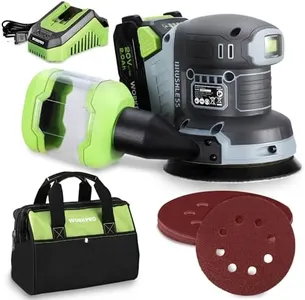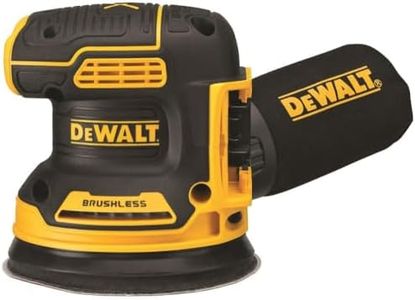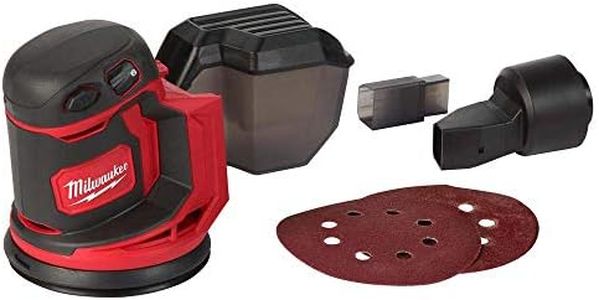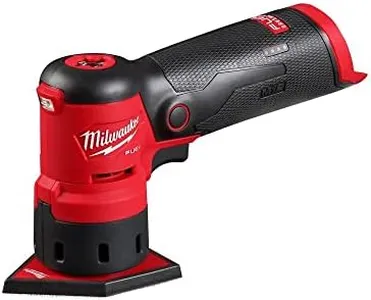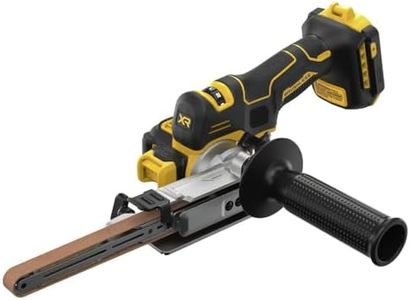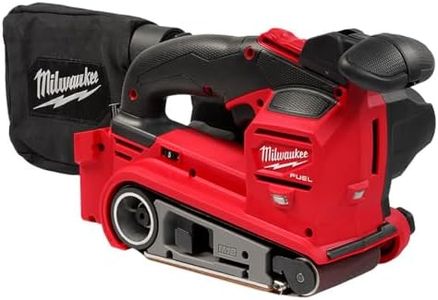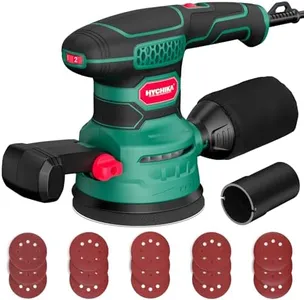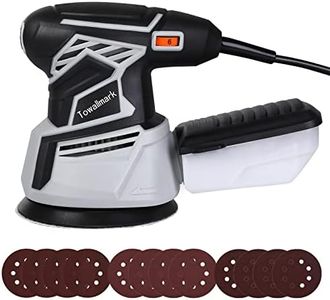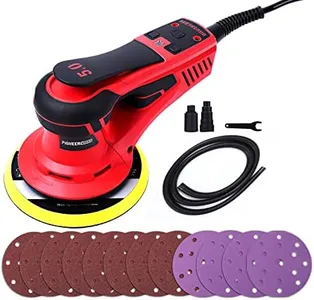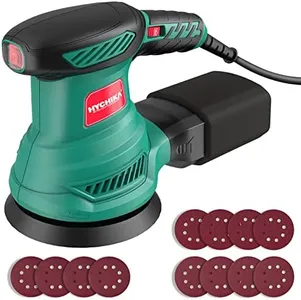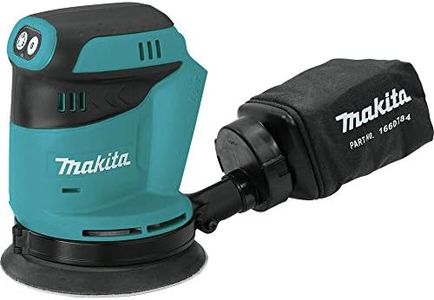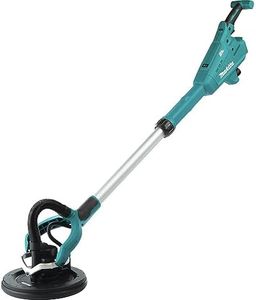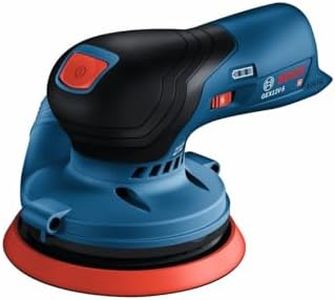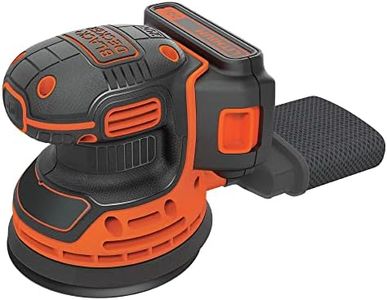10 Best Cordless Sanders 2025 in the United States
Our technology thoroughly searches through the online shopping world, reviewing hundreds of sites. We then process and analyze this information, updating in real-time to bring you the latest top-rated products. This way, you always get the best and most current options available.

Our Top Picks
Winner
DEWALT 20V MAX Orbital Sander, Tool Only (DCW210B)
Most important from
12538 reviews
The DEWALT 20V MAX Orbital Sander is a robust, battery-powered sander designed for efficient and precise sanding. It features a brushless motor which enhances its runtime and efficiency, making it well-suited for various sanding applications. The variable-speed control ranges from 8,000 to 12,000 OPM, allowing you to adjust the speed based on your task, which is very handy for different types of wood or projects. The low-profile design ensures you can get close to your work, providing better control for detailed sanding jobs.
The dust-sealed switch and one-handed locking dust bag help keep dust at bay, although the dust collection is most effective when connected to DEWALT’s specific dust collectors (sold separately). The ergonomic design, with a texturized rubber grip, offers comfort during extended use, which is a big plus. However, it is sold as 'tool only,' meaning the battery is not included, so if you don't already own a compatible DEWALT battery, that's an extra cost to consider.
It comes with an 8-hole hook-and-loop sanding pad for easy paper changes, although some users might find the need to purchase additional accessories like the DWV9000 Universal Quick Connector for other vacuum systems. This sander is lightweight at just over 2 pounds, making it easy to handle for longer periods without causing strain. Given its features and user-friendly design, it is particularly beneficial for DIY enthusiasts and professionals who need a reliable and efficient cordless sander for various projects.
Most important from
12538 reviews
Milwaukee Electric Tools 2648-20 M18 Random Orbit Sander
Most important from
3271 reviews
The Milwaukee Electric Tools 2648-20 M18 Random Orbit Sander is a solid choice for anyone looking for a reliable cordless sander, especially for tasks requiring fine sanding. One of its standout features is the portability provided by its battery power. With an 18-volt battery, this sander offers decent battery life, allowing for extended use without the hassle of cords. Additionally, its motor power is adequate for most sanding jobs, making it suitable for both DIY enthusiasts and professionals alike.
In terms of sanding speed, this model performs well. It provides effective and smooth results, which is vital for achieving a polished finish. The dust collection system is another strong point; it effectively traps dust, keeping your workspace cleaner and reducing the mess often associated with sanding.
Ergonomically, the sander is designed for comfort during use, which is essential for tackling larger projects without causing fatigue. It fits well in the hand, making it easy to maneuver. There are a few drawbacks to consider. While the battery life is generally good, it may not last as long as some users might expect, especially during heavy use. Additionally, the pad size and type, while fine for general sanding, may limit its effectiveness on larger surfaces or more intricate jobs. This sander might not be the best choice if you're looking for versatility across a broader range of sanding tasks.
Most important from
3271 reviews
Milwaukee 2531-20 12V Brushless Cordless Orbital Detail Sander (Tool Only) Red and Black
Most important from
252 reviews
The Milwaukee 2531-20 12V Brushless Cordless Orbital Detail Sander is a compact and lightweight tool that offers great convenience for users looking to tackle detailed sanding projects. Weighing just 1.3 lbs, it is easy to maneuver, making it suitable for both DIY enthusiasts and professionals who need a portable solution. Its 1.5mm orbit diameter and variable speed trigger with four settings allow for precise control over sanding speed, which can speed up the process or cater to delicate tasks. The inclusion of LED lights enhances visibility, allowing users to see their work clearly, especially in hard-to-reach areas.
There are some drawbacks to consider. While the cordless design provides freedom of movement, the 12V battery may not deliver the same power and runtime as higher voltage models, which could limit its use on larger projects. Dust collection is another area where this sander falls short; although it comes with accessories, some users might find it ineffective at keeping the work area clean compared to corded models with better dust management systems.
The sander is compatible with extra coarse grit type sanding sheets and comes with several accessories, enhancing its value. Users who require extensive sanding or high efficiency might find this tool less suitable, given its lower motor power and battery capacity. The Milwaukee 2531-20 is an excellent choice for detailed, light sanding tasks, particularly in tight spaces, but may not be ideal for heavy-duty jobs or for those seeking extended use without frequent battery changes.
Most important from
252 reviews
Buying Guide for the Best Cordless Sanders
Choosing the right cordless sander can make your woodworking or DIY projects much easier and more efficient. Cordless sanders offer the convenience of mobility without the hassle of cords, making them ideal for working in tight spaces or on large surfaces. When selecting a cordless sander, it's important to consider several key specifications to ensure you get the best fit for your needs. Understanding these specs will help you make an informed decision and find a sander that meets your specific requirements.FAQ
Most Popular Categories Right Now
